The booby Bird, better known simply as the “Booby,” is actually a group of seabirds that share the Sula taxonomical genus. There are six species of Boobies alive today, the Blue-Footed, Red-Footed, Masked, Nazca, Brown, and Peruvian Booby. As a group, these birds are closely related to gannets. Read on to learn about the Booby Bird.
Description of the Booby Bird
This group of birds is similar in shape, but each species differs in color. Some species of Boobies are predominantly white, while others have mostly black or gray feathers.
Their beaks are moderately long, thick, and pointed. These birds are quite large, and commonly grow longer than two feet, and weigh up to five pounds.
Interesting Facts About the Booby Bird
Because each species of Booby Bird is so different, it would simply be an injustice not to take a look at each bird in a little more detail. We highlight some of the different species of Booby below.
- Blue Footed Booby – Of all the Boobies, the blue footed is probably the most well-known. Their allure is obvious by their name and appearance … They have blue feet! These odd birds live along various portions of the western coast of Central and South America, as well as the Galapagos Islands.
- Red Footed Booby – Conversely, red footed Boobies have bright red feet, as their name suggests. Their beaks, on the other hand, are blue at the base, and lighten as they taper to a point. This species has many different color varieties, ranging from bright white to dark brown, and virtually anything in between!
- Brown Booby – The plain ol’ Brown Booby is actually anything but. Their plumage (feathers) is actually quite beautiful regardless of their lack of bright colors. Their brown feathers have a soft iridescent sheen, which contrasts off the bright white of their underbellies.
- Masked Booby – Finally, the masked Booby has clean white plumage, accented with black feathers on their wings, tail, and face. Their namesake mask is a ring of black feathers, which runs along the base of their beak.
Habitat of the Booby Bird
Like many other species of seabirds, Boobies generally live over the open ocean, and come ashore primarily to breed. When they do rest on land, they seek islands and coastal shores before heading back into the ocean.
All species reproduce on land, though each species seeks out a different type of nesting habitat. Some of their nesting sites include trees, cliffs, remote islands, and more.
Distribution of the Booby Bird
Different Booby species live in different regions, though many populations overlap with those of other Booby species. These birds range from the Gulf of California to the coasts of South America, as well as all the surrounding Pacific Islands.
They also live in the islands north of Australia and the surrounding areas. Sometimes vagrant birds find themselves outside of their usual range as well, roaming as far as the Atlantic coasts of North America.
Diet of the Booby Bird
Boobies are seabirds, and thus feed primarily on seafood. Their primary prey includes a variety of fish and squid species. Some of their favorite fish are sardines, anchovies, flying fish, and mackerels.
Generally, they hunt small species of fish that congregate in large groups, called schools. Different species of Boobies eat different species of fish, depending on their range and distribution.
Booby Bird and Human Interaction
Fishermen gave Boobies their name because they viewed the birds as stupid. This is because tired Boobies would sometimes land on fishing boats to rest, and the fishermen would easily kill and eat them. Despite this, their populations as a whole are stable.
Though the IUCN lists the various species of Boobies as Least Concern, a number of populations are on the decline. This is primarily due to overfishing of their favorite prey species, which makes it difficult for them to find food.
Domestication
Humans have not domesticated Booby Birds in any way.
Does the Booby Bird Make a Good Pet
All of the various Booby species eat fish. Even though you might think it would be fun to have such a funny-named bird as a pet, you would quickly discover that a diet of fish makes for putrid poop. There are plenty of other types of birds that you can own as a pet instead.
Booby Bird Care
Most Booby Birds come to zoos or aquariums when something injures them in the wild. These injuries vary from fishhooks to net entanglement, and even people shooting them! Some birds have injuries so severe that they cannot survive in the wild. I
n these cases, zoos use the injured birds to teach visitors about the dangers of overfishing, improper disposal of fishing line, and much more. Meanwhile, the injured birds enjoy their “retirement” and a lifelong supply of yummy fish and squid.
Behavior of the Booby Bird
Though behavior varies based on the species and the individual bird, most Boobies are solitary. They sometimes congregate in small flocks outside of the breeding season, but the vast majority roams the oceans alone in search of food. However, as the breeding season approaches, large numbers accumulate on land to form breeding colonies.
Reproduction of the Booby Bird
Most Boobies are monogamous, and continue to mate with the same partner until one of them dies. The pair guards its own small nesting territory within the crowded colony. Both newly-formed and newly-reunited partners perform dances and other courtship rituals, many of which include dramatically showing off their feet.
Depending on the species, the female Booby lays between one and three eggs, which she incubates for nearly two months. The young chicks begin to fledge when they are about three months old, before this time they are completely dependent on their parents.


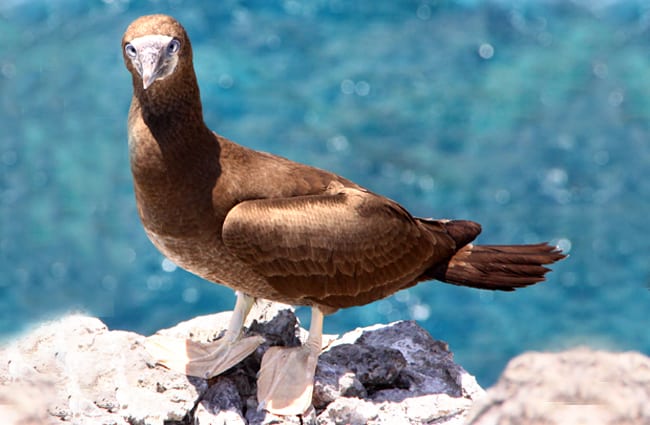
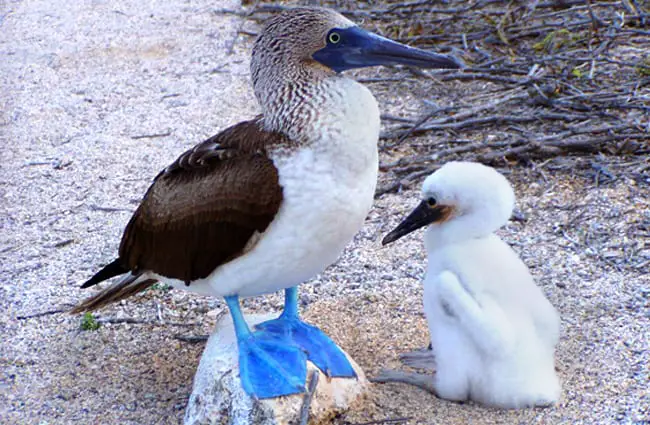
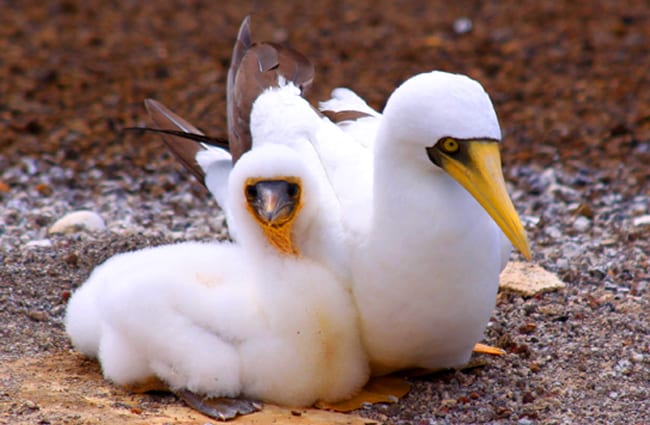

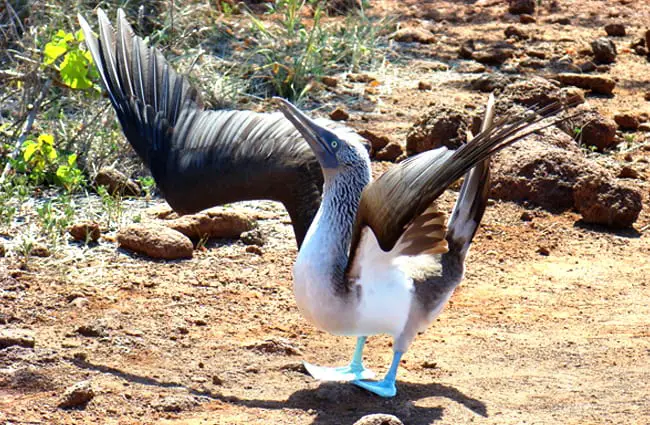
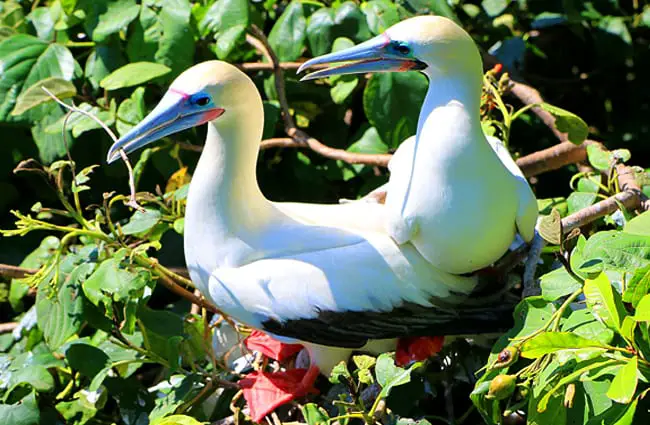

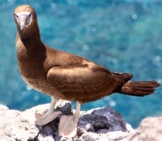
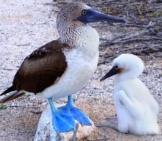

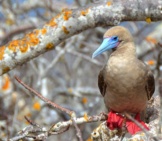
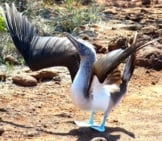
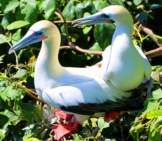
![Red Angus Closeup of a beautiful Red Angus cowPhoto by: U.S. Department of Agriculture [pubic domain]https://creativecommons.org/licenses/by/2.0/](https://animals.net/wp-content/uploads/2020/03/Red-Angus-4-238x178.jpg)












![Red Angus Closeup of a beautiful Red Angus cowPhoto by: U.S. Department of Agriculture [pubic domain]https://creativecommons.org/licenses/by/2.0/](https://animals.net/wp-content/uploads/2020/03/Red-Angus-4-100x75.jpg)

